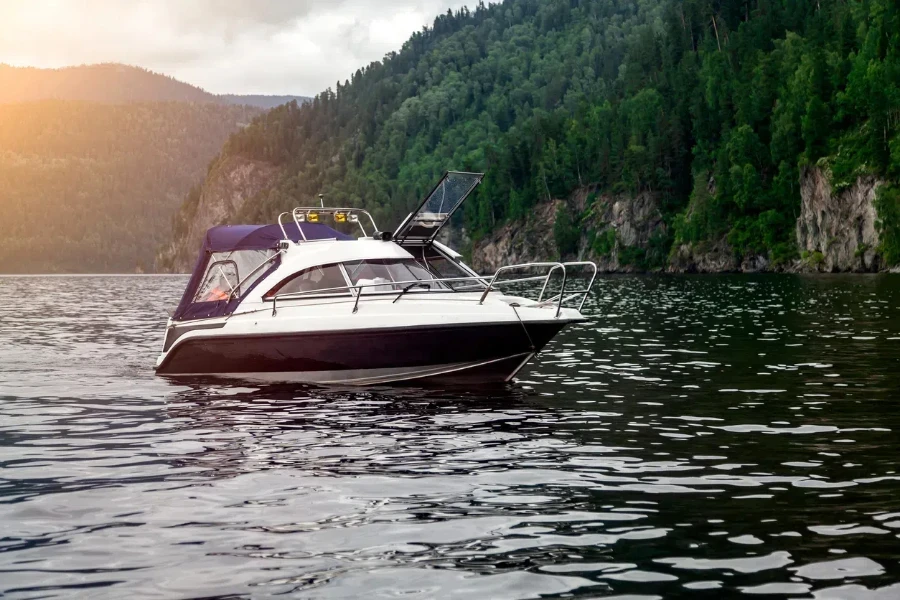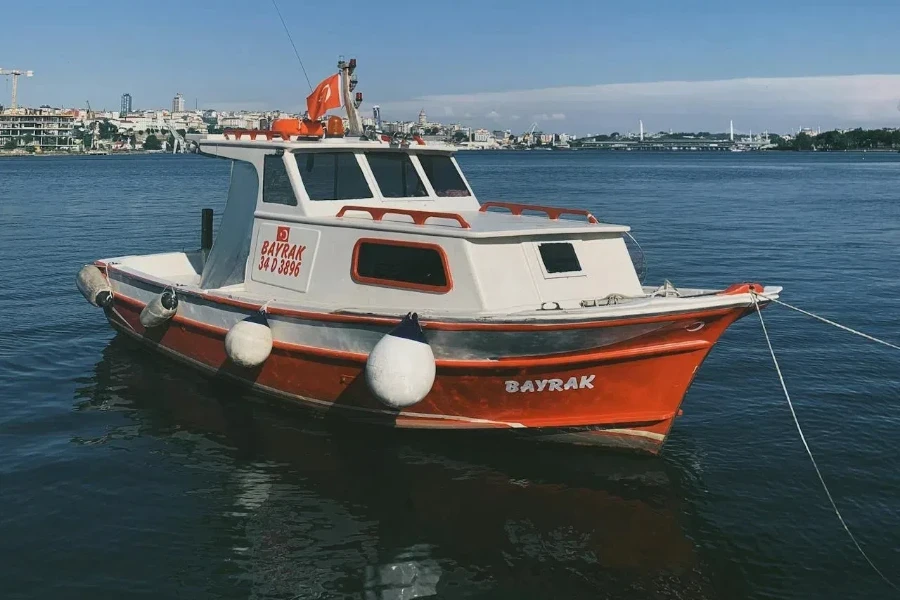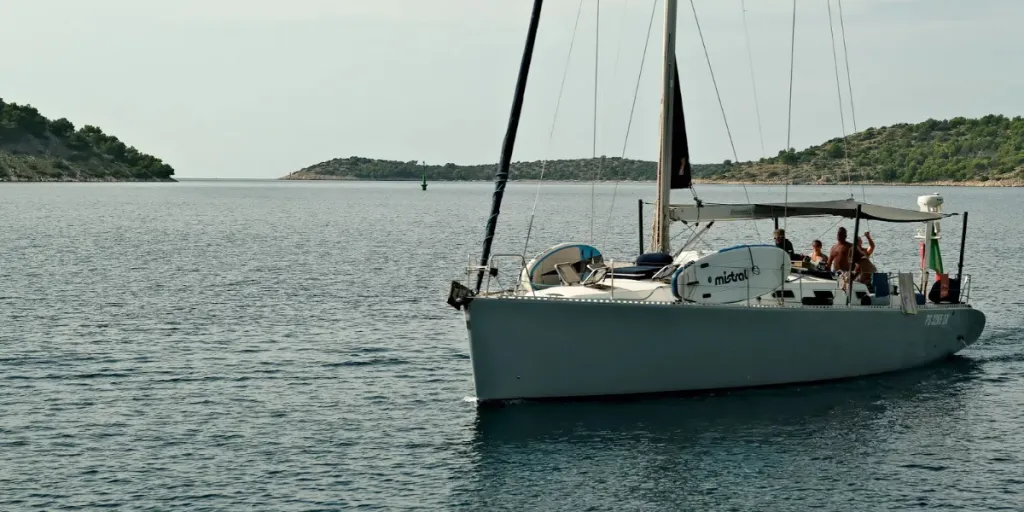It’s easy to feel overwhelmed when looking at yachts, especially if retailers are new to selling these fantastic vehicles. How would you know what’s a good boat? What would suit potential consumers better? These questions will mostly be the first to pop up when considering entering the yacht market.
Buying a boat is a big and expensive decision for consumers, who won’t want to make a mistake. For this reason, business buyers shouldn’t either. This article will explore everything businesses new to selling yachts should consider before adding options to their inventories.
Table of Contents
How profitable will yachts be in 2025?
5 factors to consider when choosing a small yacht
Wrapping up
How profitable will yachts be in 2025?
According to Grand View Research, the global yacht market was estimated to be worth US$9.39 billion in 2023. Experts expect it to reach US$13.29 billion at a 5.1% compound annual growth rate (CAGR) from 2024 to 2030. The market is experiencing a steady demand increase thanks to a growing desire for leisure adventures and rising disposable income.
Here are other key stats to note about the global yacht market:
- The growth of the luxury travel market is also fueling demand for yachts.
- Although the 20–50 m segment dominated the market in 2023, the below-20 m segment will register the fastest CAGR.
- Motor yachts are also the most popular type, with a whopping 81.5% revenue share.
- North America is one of the biggest markets for yachts, with the U.S. growing notably.
- Europe is the dominant region with a 38.9% revenue share.
Google data also shows “small yachts” registered a 70% search increase from 2023. They ended 2023 with 14,800 searches before boosting to 18,100 in February 2024. Then, searches grew to 33,100 searches in August 2024—a 60% boost in the last seven months.
5 factors to consider when choosing a small yacht
1. Choose between sailing and motor yachts

Yachts are divided into two primary categories: sailing and motor yachts. Motor yachts are the more popular option because they are faster and more intuitive, meaning many people can use them safely without expert skills. They also have more entertaining space and accommodation than their sailing counterparts.
On the other hand, sailing yachts offer a more traditional experience. They appeal to consumers who prefer a quieter ride and a more economical boat operation (the wind). Choosing between these two is the first step to creating a fantastic yacht inventory.
2. Hull material

Yacht hulls have different material varieties. They can feature steel, aluminum alloy, ferrocement, fiber- or glass-reinforced plastics (solid, balsa core, or foam core), carbon fiber, and wood. Each hull material caters to different preferences, offering their advantages and disadvantages.
Here’s a closer look at what makes each hull material a good choice and why some consumers avoid them.
| Material | Advantages | Disadvantages |
| Steel | 1. Steel is the most robust hull material. 2. It’s also affordable to build and maintain, and consumers can repair them almost anywhere in the world.3. Steel hulls are also incredibly resistant to osmosis. | 1. Steel hulls can rust and reduce structural integrity inside and outside.2. Steel hulls are also heavier than other materials.3. Despite being cheap to maintain, steel hulls still require high maintenance and regular painting. |
| Aluminum alloy | 1. Aluminum hulls need extremely low maintenance compared to steel.2. Owners don’t need to paint frequently above the waterline. 3. Aluminum hulls are highly resistant to rust (though corrosion can damage the hull without maintenance).4. The material is also resistant to osmosis.5. Aluminum hulls don’t need barrier coatings. | 1. Aluminum hulls are weaker than steel.2. While they don’t need regular maintenance, aluminum hulls are expensive to maintain (or even build). 3. Yacht owners won’t be able to repair them in remote locations, mainly if they lack specialized repair equipment.4. Aluminum hulls are not compatible with most anti-fouls.5. It’s hard to insulate aluminum hulls from temperature and noise. |
| Ferrocement | 1. Ferrocement hulls are incredibly cheap to build and maintain.2. These hulls are also resistant to osmosis. | 1. Ferrocement hulls need a lot of maintenance.2. These hulls are not resistant to rust and are way weaker than steel.3. Ferrocement hulls are the heaviest, so yachts may not sail well with them. |
| Solid fiberglass | 1. These hulls are stronger than fiberglass composite (balsa and foam cores).2. Solid fiberglass hulls are highly resistant to corrosion.3. These hulls require low maintenance.4. Maintenance is cheap, too, as owners can do minor DIY repairs. | 1. Solid fiberglass is heavier than composite options but less strong than steel.2. These hulls are weak against osmosis.3. Extensive repairs and maintenance are expensive. |
| Fiberglass-balsa core | 1. These hulls are stronger than their foam cousins.2. They don’t require a lot of maintenance.3. These hulls are reasonably lightweight. | 1. Fiberglass balsa cores are still heavier than foam cores.2. The hull can be destroyed by osmosis.3. These hulls are also weaker than steel and solid fiberglass. |
| Fiberglass-foam core | 1. Fiberglass-foam cores also require low maintenance.2. They are lighter than solid fiberglass and balsa core hulls. | 1. Foam cores are the weakest hull materials.2. They are weak to osmosis. |
| Wood | 1. Wood hulls are lighter than steel models.2. They can incur low maintenance costs if owners do it regularly.3. Wood hulls do not rust and are immune to osmosis. | 1. Wood hulls require high maintenance.2. Weaker than steel and solid fiberglass, depending on thickness.3. Wood hulls are pretty expensive to make. |
3. Keel type

Keels are a critical part of any yacht’s design. They are responsible for stability and control, providing a necessary counterbalance to prevent the boat from capsizing. More importantly, small yachts can have up to seven keel types, each offering different levels of comfort (stability on water), speed (less underwater resistance), and maneuverability (ability to make quick turns).
Here’s a closer look at the pros and cons of different yacht keel types below:
| Keel type | Benefits | Downsides |
| Full or long fin keel | 1. This keel offers impressive stability and heeling resistance, making it ideal for big-sea sailing.2. This keel can also protect the yacht’s rudder.3. Full keels are safer for grounding. | 1. Maneuvering in reverse with a full keel can be challenging.2. Full keels are also less efficient to tack.3. This keel can only work on deeper waters. |
| Retractable keel | 1. Owners can easily adjust the draft by raising and lowering the keel.2. Retractable keels can sail on shallow waters.3. Owners can also move this yacht with a boat trailer. | 1. These keels are generally less stable than their fixed counterparts.2. Retractable keels may have mechanical issues with their retraction system.3. They also require regular maintenance. |
| Bulb or wing keel | 1. This keel blends good stability with excellent performance.2. It offers a relatively shallow draft, meaning they can work on more sailing grounds than full keels. | 1. Repair costs can be extremely high.2. Owners have a higher risk of grounding damage. |
| Deep fin keel | 1. Deep fin keels offer superior performance, especially in upwind conditions.2. They are stable and resistant to heeling. | 1. Owners can’t access shallow waters with this keel.2. This keel makes yachts challenging and expensive to transport with a boat trailer. |
| Bilge keel | 1. These keels have more hull protection for grounding.2. Owners can beach yachts with bilge keels in suitable conditions. | 1. Bilge keels don’t perform well compared to other types, especially in stability and speed. |
| Encapsulated keel | 1. This keel type is resistant to corrosion and damage.2. It can provide a smoother underwater profile, reducing drag. | 1. Encapsulated heels are more expensive and complex to build and repair than traditional options. |
4. The yacht’s draft

Another essential thing to consider is the draft, which we’ve already mentioned a few times. The draft creates a vertical distance between the bottom of the hull (keel) and the waterline. More importantly, it measures how much water the yacht will need before it touches the bottom.
Typically, most offshore yachts have deeper drafts (5–6 feet or more). However, this can limit how close to shore consumers can stay without damaging their boats. It also limits what yacht owners can do when sailing island reefs and lagoons. The more draft a boat has, the less access it will have to different sailing grounds.
Here’s more information on the different draft measurements and how they impact small yachts.
- Shallow draft (2–4 feet): Small yachts with shallow drafts can access shallow water, harbors, and rivers. They are also ideal for coastal cruising and inland waterways. However, they are less stable in rough seas due to lower displacement and limited cargo capacity.
- Moderate draft (4–6 feet): Yachts with this draft offer a good balance of stability and maneuverability. They can handle various conditions, including coastal cruising and offshore sailing. Nevertheless, these drafts may not work well in some shallow areas, especially during low tide.
- Deep draft (6+ feet): These drafts provide better stability and seaworthiness in rough conditions. Yachts that have them can also carry more cargo and passengers. However, they can only work on deeper waters and larger harbors—no shallow coastal areas or inland waterways.
5. Pre-owned models vs. brand-new

Sometimes, consumers prefer pre-owned models to brand-new ones to keep costs down. So, businesses must also consider if their target consumers have enough budget to purchase a brand-new yacht or will want an older model. Usually, choosing between both options is the same as choosing any vehicle. If retailers decide to stock pre-owned models, they must ensure their stock is in peak condition before selling.
I. Pre-owned small yachts
Pros of pre-owned small yachts
Pre-owned yachts are generally more affordable and cost-effective than new ones, especially if they are a few years old. Since most pre-owned yachts have already experienced most of the initial depreciation, it reduces a buyer’s potential financial loss after buying them.
If consumers are lucky, they may find a pre-owned yacht packed with their desired features or customizations. Plus, a pre-owned yacht generally has track records of performance and reliability, which can inform prospective buyers about the desired yacht before buying. However, businesses must verify the yacht’s history before buying, including any accidents or major repairs.
Cons of pre-owned small yachts
The overall condition of pre-owned small yachts can vary widely, so consumers may need to invest in repairs or maintenance after getting information about the yacht. With pre-owned yachts, getting warranties is usually rare because it’s tricky to tell how the previous owner used the yacht.
II. Brand new small yachts
Pros of brand new small yachts
Unlike pre-owned, new yachts typically come with the manufacturer’s warranty. Plus, buyers can customize their new yacht to their desire, ensuring it matches their specifications. Also, new yachts usually have the most up-to-date technology and features, and they are usually in pristine condition.
Cons of brand new small yachts
New yachts are generally more expensive than pre-owned ones. Also, they have the potential to depreciate rapidly, especially in the first few years. With new small yachts, there may be less room for negotiation on price compared to pre-owned yachts.
Wrapping up
Small yachts offer many advantages over larger vessels. For starters, they are usually cheaper, allowing consumers to set sail quicker and explore the ocean. They also have easy engine access, intuitive operation, and more comfortable sizes for casual leisure activities.
Demand for small yachts is also increasing, so now’s the best time to enter the market. But remember to keep the points discussed in this article in mind—it’ll help create an attractive yacht selection for aspiring owners. Subscribe to the sports section on Alibaba Reads for more interesting topics like this.




